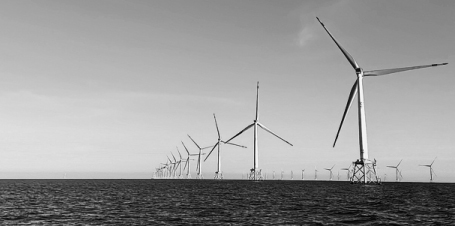Guangdong wind power project connects to grid
A 300-megawatt offshore wind power project on Nanpeng Island, Guangdong province, has seen all its wind turbines connect to the grid for power generation recently.
The project marks the first time that a wind turbine installation was done in winter in the South China Sea, and also China's deepest offshore wind farm that is part of all wind farm projects whose full capacity has connected to the grid, said China Energy Conservation and Environmental Protection Group, or CECEP, the project's builder.
Once fully in use, the project is expected to produce 800 million kilowatt-hours of electricity per year, saving about 249,800 metric tons of standard coal equivalent and reducing carbon dioxide emissions by about 454,000 tons, CECEP said.
Standard coal equivalent is a unit of energy measurement corresponding to the energy produced by the coal combustion. Per-kilogram standard coal equivalent corresponds to a value of 7,000 kilocalories.
Since the first batch of wind turbines was connected to the grid on Jan 16, the project has generated 180 million kWh of clean electricity, CECEP said.

A view of the wind turbines installed on Nanpeng Island, Guangdong province, in August. CHINA DAILY
Located in an area with complex sea conditions, the project managed to overcome a series of challenges during its construction. These included typhoons, thunderstorms, swells, and difficulties resulting from complex seabed topography and geological conditions. Overall experiences thus gained are expected to provide technical reference for future wintertime wind power projects in the South China Sea, the company said.
"At present, wind farms are mainly located in the northwestern part of China, while eastern provinces have the largest electricity consumption. Transporting wind power from west to east is costly, and eastern regions have limited land resources to establish wind farms. As a result, developing offshore wind power in the eastern region is important in terms of providing cost-efficient green power to eastern provinces, where demand is high," said Lin Boqiang, head of the China Institute for Studies in Energy Policy, which is part of Xiamen University in Fujian province.
CECEP also said the project is part of the company's concerted efforts in helping local governments achieve their carbon goals, under China's commitment to peak carbon emissions by 2030 and reach carbon neutrality by 2060.
The move is in line with the Guangdong provincial government's plan on developing the ocean economy during the 14th Five-Year Plan period (2021-25).
According to the plan, Guangdong province will step up efforts to incubate startups in emerging industries related with the ocean economy and build offshore wind power industry clusters.
The province also pledged that it will promote the development of offshore wind power projects, along with development of marine pastures, offshore hydrogen production and sightseeing tours. It aims to have 18 million kW installed capacity of offshore wind power put into production by the end of 2025.
Guangdong also said it will promote the development of offshore wind power industry clusters in Yangjiang city where CECEP's offshore wind farm is located, and in the eastern part of the province. Besides, it said it will strive to achieve an annual production capacity of 900 units of wind power facility in the province.
CECEP said in November that its eight additional wind power projects across the country will have their full capacity connected to the grid by the end of this year.



 Print
Print Mail
Mail

